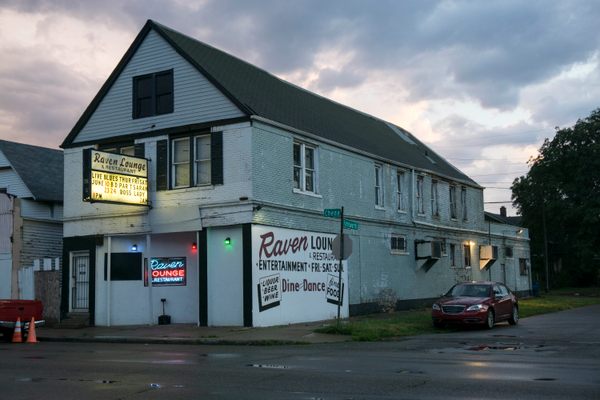Doe's Eat Place
In the mid-20th century, a tamale-slinging juke joint attracted a diverse clientele in the Mississippi Delta.
Dominick “Big Doe” Signa began selling hot tamales in Greenville, Mississippi, in 1941. He’d just taken over the grocery that his father opened in 1903.
“Papa’s Store,” as the Italian-American family called it, operated successfully until a flood in 1927 (Greenville sits in the middle of the Mississippi Delta). To stay afloat, Big Doe went into bootlegging. When he sold his still for $300 and a Ford Model T, the store became a juke joint that served chili and buffalo fish to the city’s Black community. Revelers who wanted to drink simply hid their booze inside brown bags (Mississippi didn’t repeal Prohibition until 1966).
The Signa family operated from the front of their home on Nelson Street, a strip that served as a hub for local Black culture. As rumors of the spot’s delightful food spread, white customers started flocking to Nelson Street. In a reverse of segregationist policies of the era, Black patrons entered Signa’s juke joint through the front door, while white customers entered through a side door into a back room. There, they picked up orders of hot tamales, steak, and spaghetti to-go.
As patrons began seating themselves at the small table in the Signa family’s kitchen in the back, the takeout eatery slowly shifted into a restaurant. Living room furniture was swapped out for more tables. Within a few years, the back became too popular to man without backup. Big Doe employed family, converted the whole ground floor into an “eat place,” and came up with an informal menu (it was never printed).
Doe’s original chili, hot tamales, steaks, and spaghetti are still on offer, along with shrimp, fries, salad, and garlic bread. Though Big Doe retired in 1974 and passed away in 1987, the Signa family remains at the head of the historic spot. His descendants and extended family run the operation, cook steak on the same broiler, and greet customers who enter through the old honky-tonk (now a kitchen). The hot-tamale recipe that started it all remains unchanged. Today, customers of all races can enjoy it together in the dining area.
Know Before You Go
Fans have opened Doe’s Eat Places in other southern locales, all of which pay tribute to the historic prototype in Greenville.




















Follow us on Twitter to get the latest on the world's hidden wonders.
Like us on Facebook to get the latest on the world's hidden wonders.
Follow us on Twitter Like us on Facebook